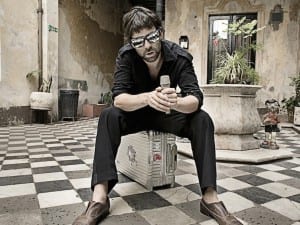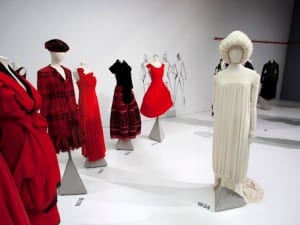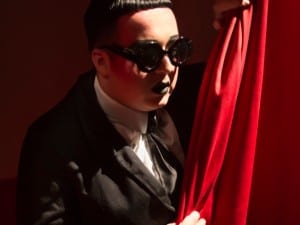As a magazine, we celebrate the visual arts in all forms and that’s why the Aesthetica Art Prize welcomes entries from artists working in all mediums. Artists may submit their work into any one of the four categories; Photographic & Digital Art, Three Dimensional Design & Sculpture, Painting & Drawing, Video, Installation & Performance.
Earlier this week we showcased a selection of images from last year’s Photographic & Digital Art category. This selection was taken from the Aesthetica Creative Works Annual 2012, available to purchase here.
Still in need of inspiration? Here’s a selection of images from the Installation and Performance category. Enjoy!
Julia Vogl: Colouring the Invisible
Colouring the Invisible (18 October – 17 December 2010) was a five storey installation including 150 windows coated in multicoloured translucent vinyl. The colours were associated with languages collected from surveying over 400 individuals asking them which languages they spoke fluently. The work was installed at the School of Slavonic and East European Studies at University College London. The piece makes language visible and fosters the debate around language as identity, while transforming a space to reflect the community that uses it. Since winning the prize last year, Julia Vogl has exhibited on both sides of the Atlantic; including Saatchi and Channel 4’s New Sensations Show and Fort Greene Park,Brooklyn and has recently won the prestigious Catlin Art Prize.
David Ogle: 08003
An ongoing series of experiments, these installation works begin as mathematical, process orientated line drawings that build up a repeated flat form to produce the illusion of three dimensional depths. The work is an attempt to transfer the properties of these drawings into physical spaces, different points of perspective offering changing arrangements of line and form that optically flatten an environment. Additionally, the traditional proportion of line drawing is shifted into something that is larger than the human body (our main reference point for scale). Using light as a drawing tool creates a mass-less object: a two dimensional drawing somehow dragged into three dimensional spaces. David Ogle is now represented by Kinetica Museum, London and has exhibited throughout the UK.
Emily Joy: Strahlenbrechung (Breaking the Ray)
Emily Joy creates installation pieces that explore the subjectivity of memory, its dissipation and mutability. Nostalgic spaces are suggested through symbolic objects, which represent a subjective interaction with the memory of a significant person or place. The work examines themes of absence, trace and the loss inherent in the act of remembering, whilst questioning objective and singular memory. Strahlenbrechung (Breaking the Ray) refers in part to Freud’s comparison of the filtering of visual information to a ray of light passing through a prism. The work, which predominantly utilises casting techniques and projection, reflects a desire to retrace the shadows of a now absent presence, to re-appropriate traces of personal history whilst questioning our sense of ownership of our memory and of our past. Emily is currently artist in residence with Quercus at the Museum in the Park, Stroud.
Kirstie Macleod: Elysian
Elysian, an underwater performance inspired by Tennyson’s poem articulates the internal transition from life into death. The performance saw a dress hand woven from 50 strands of hand dyed silk tulle left to drown inside a tank. The resulting images show spontaneous moments of a journey into Elysian. Kirstie Macleod will be showing at Paradise Row, London later this year and has previously exhibited in Barocco, Delhi, India and Illumination at Coldharbour Gallery, London.
Tiff Oben and Helene Roberts
Tiff Oben and Helene Roberts uncover the dark and mysterious spaces of the city and the people who once inhabited them. Through highly atmospheric installation, found objects, performance, film and photography they explore, navigate and record a mythical landscape of urban dreams and nightmares, searching the dark corridors and long locked rooms of forgotten and neglected areas. By picking out the patterns of the place they look to uncover and subvert dormant narratives tuning into the historical, geographical and psychological reverberations of the space.
The Aesthetica Art Prize is open for entries until the 31st August this year. For more information and to submit: www.aestheticamagazine.com/artprize




